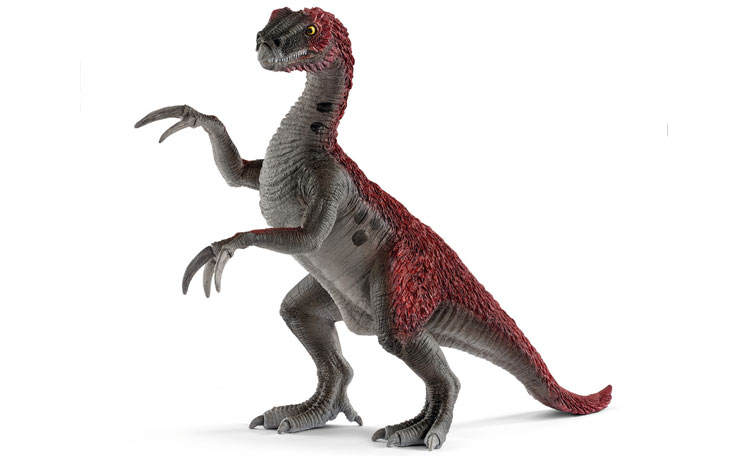Therizinosaurus Facts
| Diet | Herbivorous |
| Height | 5m |
| Weight | 5 Tons |
| Environment | Land |
| Era | Cretaceous |
| Type | Therapod |
| Location | Asia |

| Diet | Herbivorous |
| Height | 5m |
| Weight | 5 Tons |
| Environment | Land |
| Era | Cretaceous |
| Type | Therapod |
| Location | Asia |
Therizinosaurus was a large bird-like dinosaur that lived approximately 70 million years ago during the late Cretaceous period. This dinosaur was first discovered in the Gobi Desert of Mongolia and is known for its unique and unusual features which included long claws and a herbivorous diet.
Therizinosaurus lived in a warm and humid environment around the area which is now Mongolia and China. This environment would have been full of lush vegetation within forests and swamps and these plants would have provided all the food that Therizinosaurus required.
Therizinosaurus belonged to the Therizinosauridae family of dinosaurs which was a group of theropods that evolved into herbivores. This is unusual as nearly all the other Therapods evolved to be carnivores.
It is believed that Therizinosaurus used its large claws to strip leaves and branches from trees and may have used its beak to pluck softer vegetation from the ground. Its digestive system was well adapted to break down tough plant material, with a long gut and large cecum to aid in the fermentation of plant matter.
Therizinosaurus was a large dinosaur which measured up to 5 meters tall at the hip and could have grown to 10 meters long. It would have weighed up to 5.5 tonnes and would have been one of the largest dinosaurs in the late Cretaceous period.
One of the most distinguishing features of Therizinosaurus were its long, sharp claws. These claws measured up to 60cm in length and were likely used for gathering food and also for defence from predators. Its unique anatomy and long claws have led some scientists to suggest that Therizinosaurus may have used its claws to climb trees, although this theory is still the subject of much debate.
Therizinosaurus had many birdlike features including its long slender neck, small head, and large feathered arms. Its beak was narrow and hooked similar to that of a bird, and it had large, robust hind legs, which were likely used for balance and support when feeding. Its feathers may have served a dual purpose, providing insulation to regulate its body temperature and also serving as a display for courtship and territorial behaviour.